Our lengthy journey with women’s popover tunics is nearly at an end.  Today I’m discussing the last pattern in my head to head comparison – the Everyday Elegance by Patterns for Pirates.  I’ve completed reviews for three other similar patterns: Hey June Cheyenne, Itch to Stitch Mila, and Liesl + Co. Gallery Tunic.
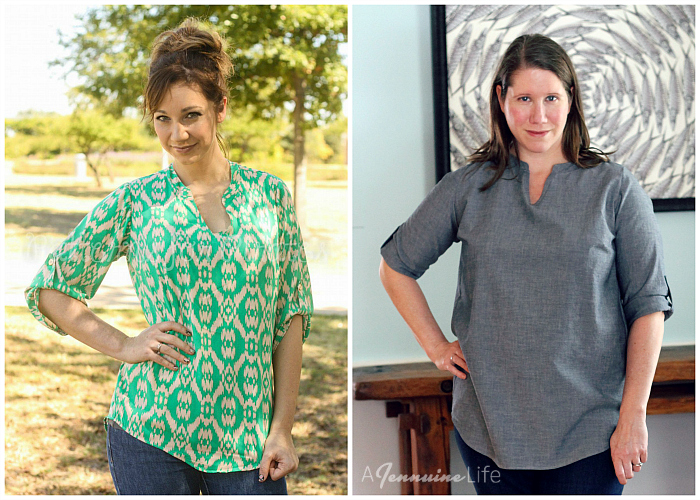
Pattern Details: The Everyday Elegance top is for women’s sizes XXS through XXXL, or 30″ to 48″ bust (referred to as “chest” in the pattern sizing, which I find strange). Â There’s just the one view as shown, with an option to add a waist tie.
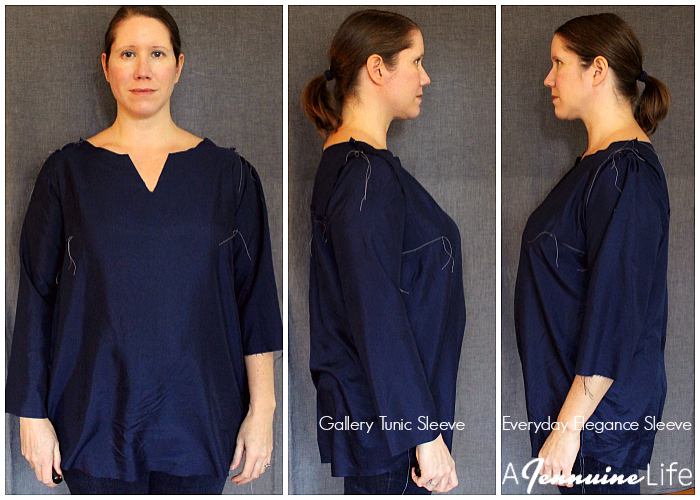
My muslin… Â Ah, that was an interesting one. Â I was not a fan of the tightly gathered sleeve cap, so after comparing the pattern pieces and discovered that I could swap in the Gallery Tunic sleeve to get a nicely eased sleeve which is much more flattering for my broad shoulders and full arms. Â I’ll talk more about the sleeve/armscye and fitting as I go through my review.
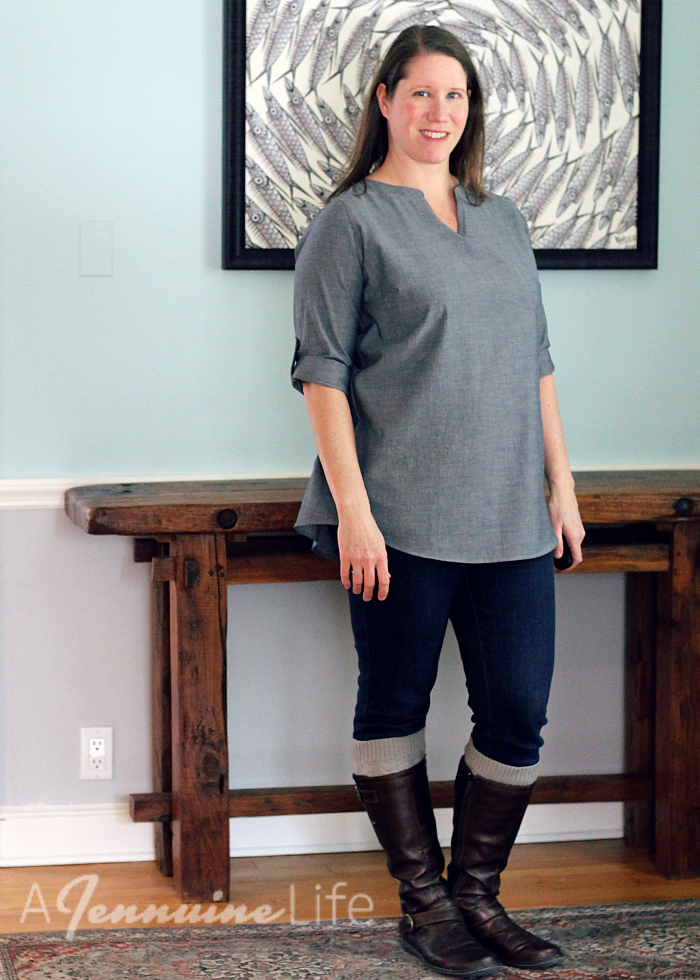
Drafting:  There are some areas that worked well and others not so much.  Grainlines are marked on the pattern pieces, and there are some notches to help with alignment.  The original sleeve has notches for gathering, but those marks are roughly the same distance apart for the smallest and largest size.  This means my XL had the same amount of space gathered very tightly as the XXS on two very differently sized sleeve caps.  There are not corresponding notches on the shirt front and back to match the sleeve to, so the instructions were “With right sides together, pin sleeve to armscye of shirt, matching corners first and moving toward the center. Pull bobbin thread of gathering stitch on sleeve to gather sleeve. Center gather at shoulder seam.”  When I did this on the muslin I was left with about an inch and a half into which to fit the gathered section.
When I closely examine the listing photos, it appears as if the sleeve cap is gathered further out than the gathering notches would indicate. Â That, or the designer is making one of the smallest sizes and this proportion is different for her as I indicated above. Â A different model in the listing definitely has the same tight gathering I experienced.
The side seams were trued appropriately so the curved hem could be sewn nicely, but the yoke to the back pieces were not. Â This could make it difficult for newer sewists to have a pleasant experience while sewing.
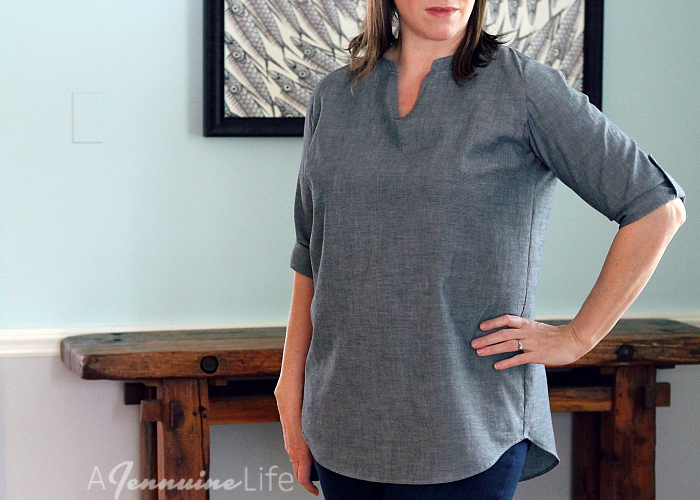
The placket is a continuous bound placket and the “v” is formed by folding the placket together and sewing across the angle. Â This is a common construction method for sleeve plackets, but I don’t love the application at the neckline. Â My placket is not laying smoothly, and I took care to match the vertical angle when I sewed it.
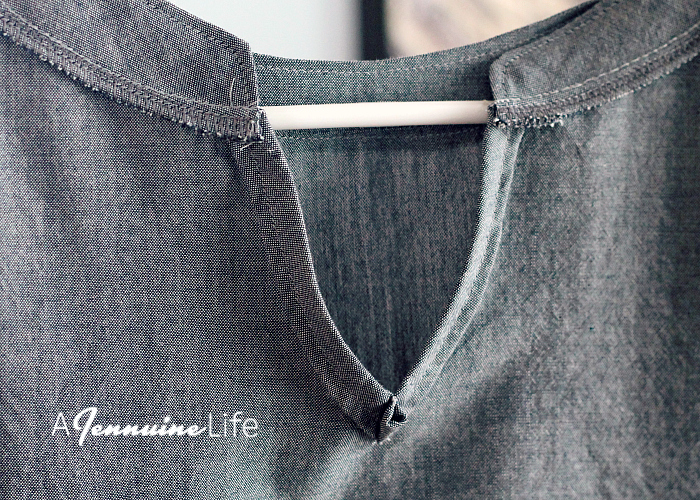
Maybe on a lighter weight fabric this would lay more nicely, but chambray is listed as one of the recommended fabrics. Â On mine, that little fold pokes into my chest no matter how much I pressed it. Â (Love the closeup of a couple threads I missed snipping?)
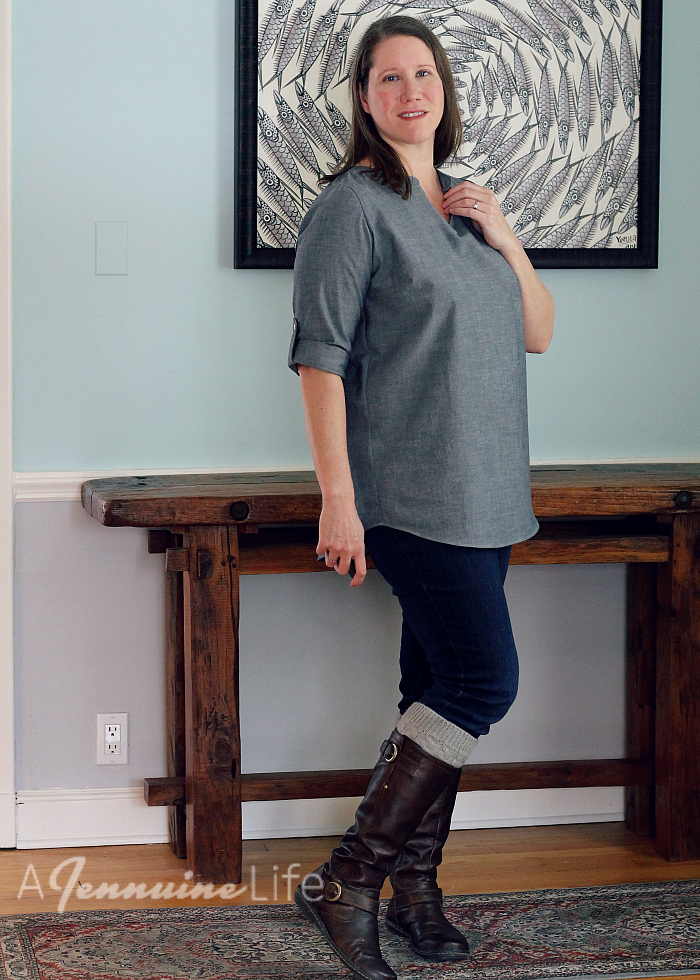
There’s no placket on the sleeve.  Just hemmed straight and a sleeve tab similar to the Cheyenne and Mila.  The sleeve length isn’t sufficient to wear it rolled down unless you like 3/4 length sleeves and every tester and customer photo I saw showed it rolled up, so that’s how I’ll wear it.
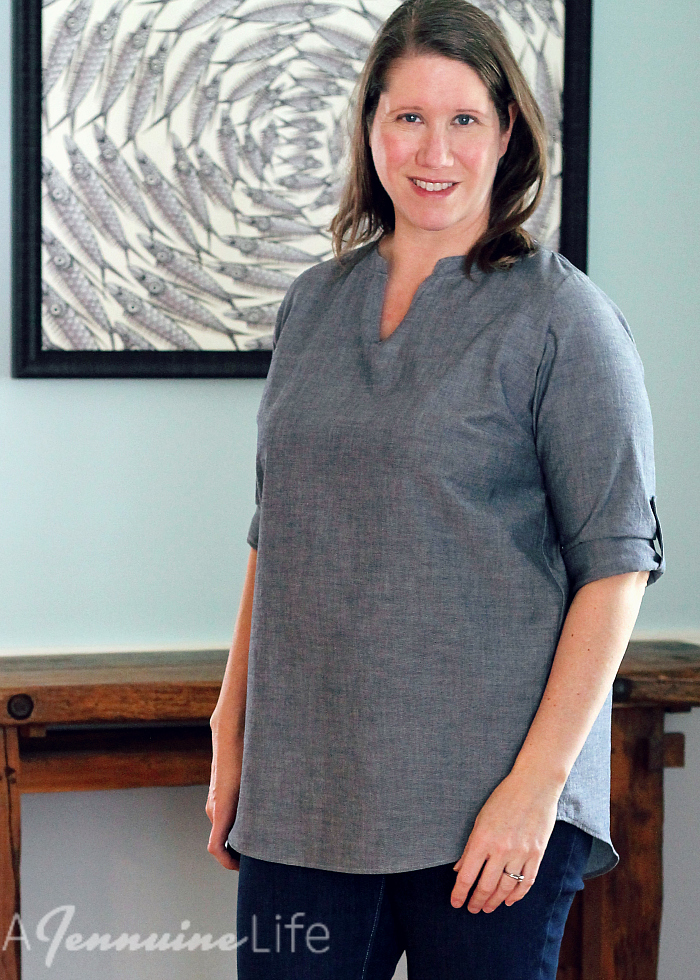
The collar is shaped well to hug the neckline.  The construction however, leaves a lot to be desired.  There are two options given to attach the collar and neither of them involves enclosing the neckline inside the collar.  The first option is to sew both layers of the collar to the right side of the neckline, then serge the edges and topstitch.  The second is to use bias tape (and no indication of width or whether it should be single or double fold) as the collar is attached and then sew the folded edge of the bias down.  As much as it pained me, I decided to just serge and topstitch.  The bias method would have been secured in place almost a quarter inch from the neckline which I didn’t think would look nice on my shirt.
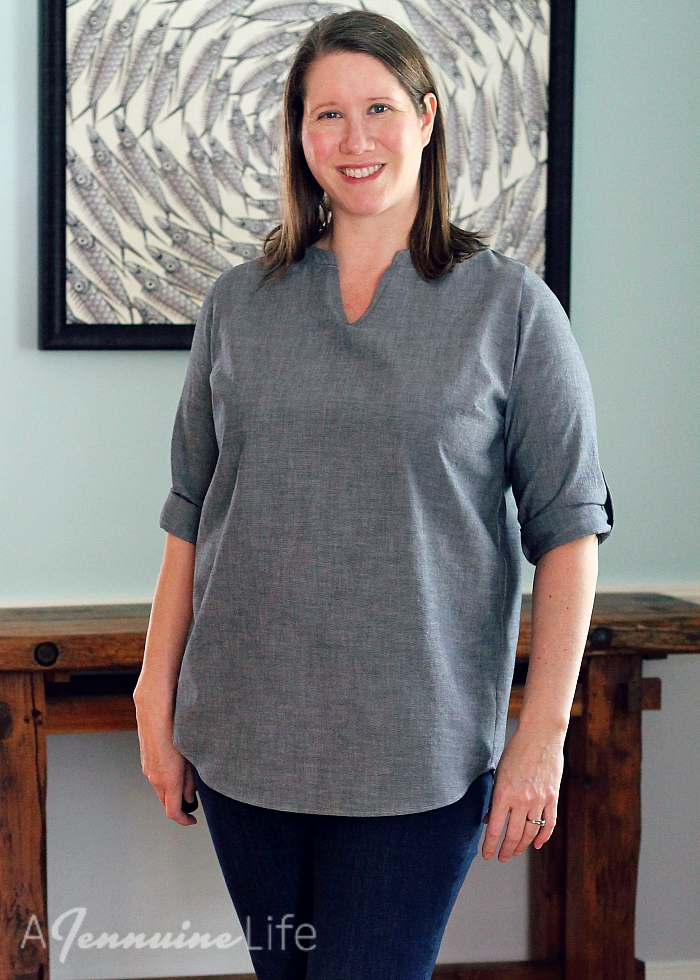
The instructions are color photos. Â They’re not always easy to interpret, though they’ve added text graphics and colored lines to try to clarify. Â The quality of the photos and graphics is not the greatest; it looks like a paint-type program was used. Â This pattern was published in 2014, so perhaps the level of professionalism has gone up since then?
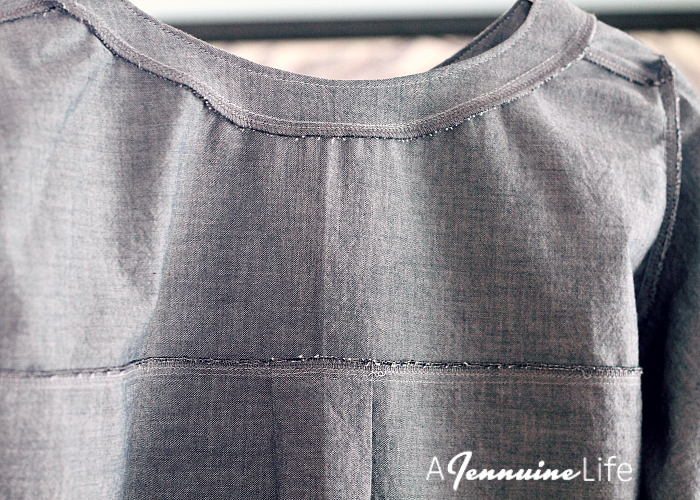
The yoke in particular is a point of disappointment.  This is such an easy place to enclose the back and shoulder seams in a double layer yoke.  The pattern listing shows how lace can be used in the yoke, and in that instance a single layer yoke might be desired. I see no reason not to include it as the standard construction for this pattern.  An argument for simplicity could be made since this pattern is targeted to beginners.  However, having enclosed seams wherever possible would eliminate the need for a serger, which is a piece of equipment most novices don’t have.
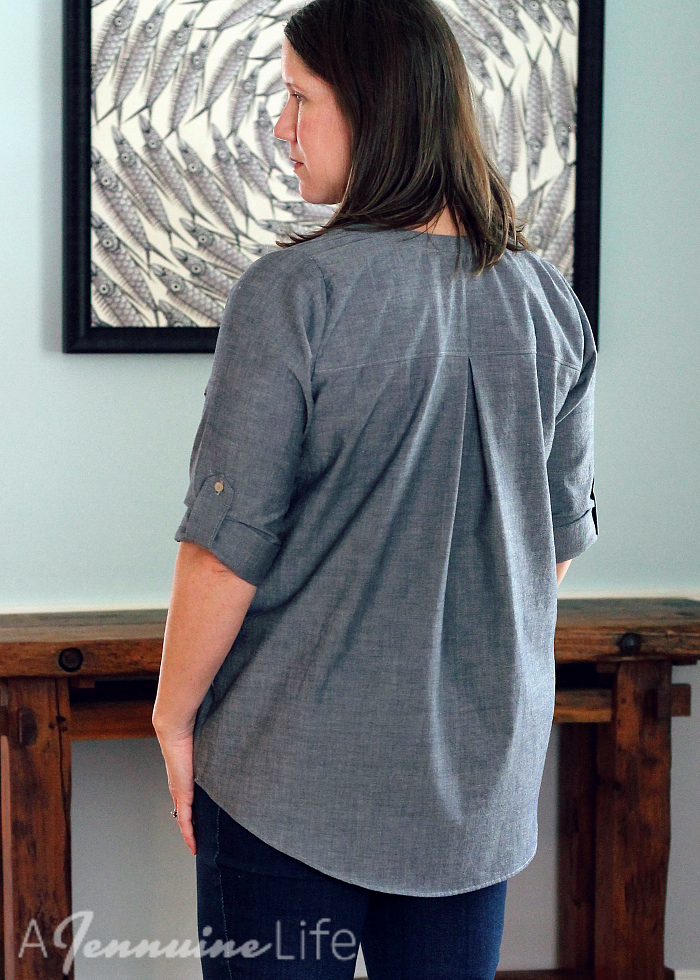
This back shot really shows the issues with the shoulders I discuss below. Â I do like the proportion of the yoke and the inverted box pleat helps the fabric flow nicely across my swayback without pooling, which was not the case with the other tunics I sewed.
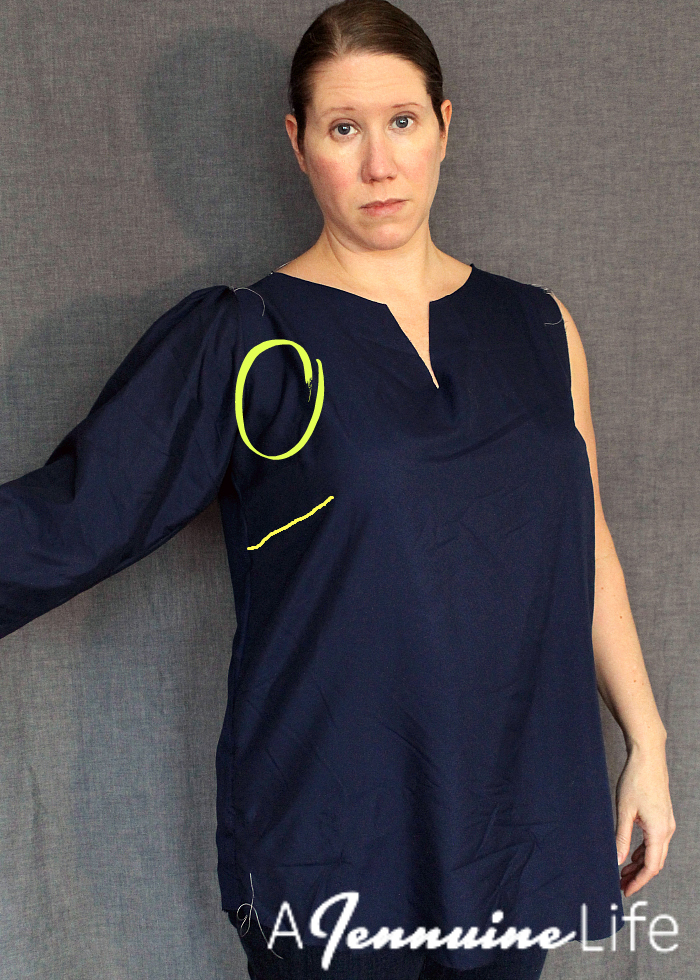
Now let me circle back to discussing the fit of my Everyday Elegance. Â I think I got so focused on the gathered sleeve and how to solve it that I overlooked some other issues. Â That, or the collar and other finishes drew areas in that I wouldn’t have seen on my simplified muslin.
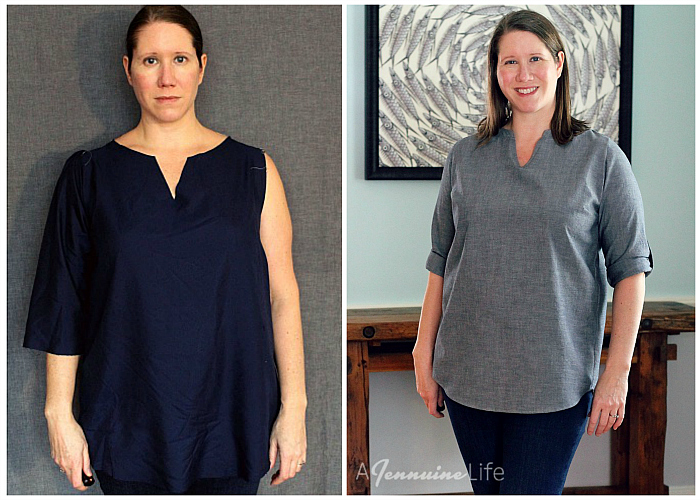
On my finished top, the armscye is a very strange shape and distorted to dig into the front of my shoulder and fold and crease on the back.  Did I worsen the issue that I saw in my muslin by swapping in a sleeve with less width?  Perhaps the gathered sleeve cap is  needed to make enough space to release the armscye.  It also seems like the finished armscye is sitting higher above my shoulder than it was on the muslin.  I think the collar may be drawing it upwards, which I wouldn’t have seen on the muslin.  If I weren’t distracted by the sleeve, I would have made a broad shoulder adjustment to remedy some of this.
The bust darts are pointing to slightly above my apex.  This isn’t an uncommon fitting adjustment for me, but somehow I missed that when I was reviewing my muslin.  Age, gravity, and breastfeeding are to blame, so I take no issue with the pattern on this one.  I just wish I had noticed it to make the adjustment – or was it another area where the collar affected the final fit?
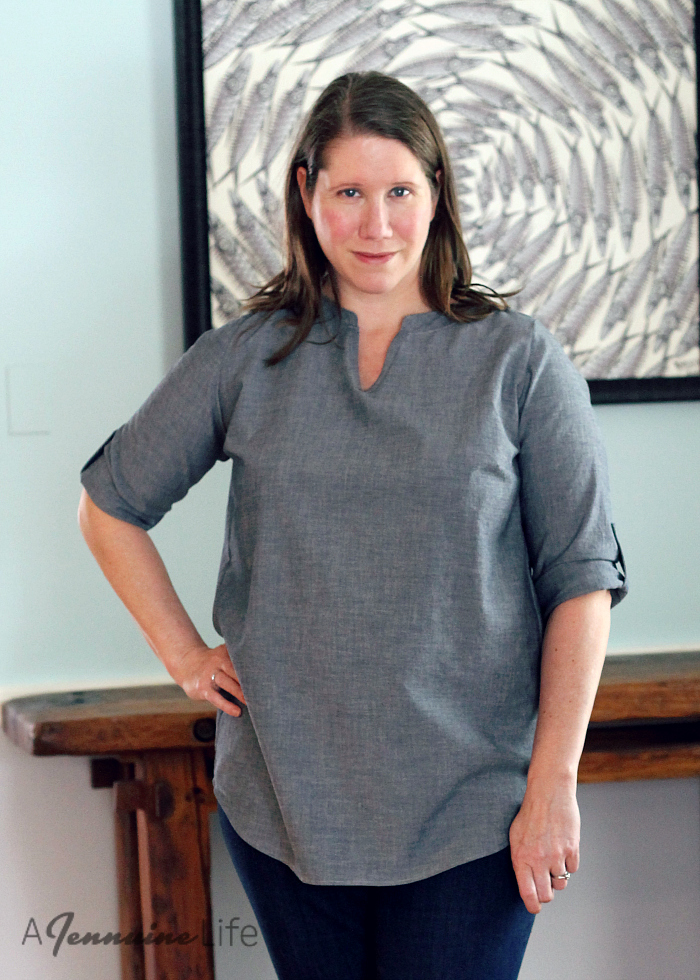
In conclusion, I can’t say that I recommend this pattern.  The “meh” result I’ve gotten required intervention, and would require more correction than I’m willing to invest in a pattern.  As I noted to a friend, this pattern is fine from the boobs down, but that certainly isn’t good enough for me.
Outfit Details:
Pattern:Â Patterns for Pirates Everyday Elegance
Fabric:Â Robert Kaufman Indigo Chambray Light from Raspberry Creek Fabric (not currently in stock)

I have so enjoyed your realistic reviews of these tunics!
Excellent review. I have that pattern, and I think it will remain on my computer, unprinted, unsewn. Your review shows your depth of knowledge in pattern making and in fit and finish. I have never been disappointed by a Jennuine pattern. Thank you!
Love the fabric and pleat in the back. Thank you for the thorough and honest review. So glad you did this series!
Goor for you to say your honestly opinion about this pattern. You raise some good points! What an amazing tunic journey you have been on. I’m really looking forward to a final comparison post. I think you mentioned you were going to do that, right?
Yes, working on it today. It’s a snow day though so kiddos are about and needing attention.
I made Everyday Elegant top with peach skin fabric and “V” did lay perfectly. I love it and it is one of my favorites. I’ve seen your other tunics and to be honest- Everyday Elegant top looks very flattering on you. You look amazing. Too bad about “V” didn’t turn out right.
I have never made the full version of this but it is my go to pattern for a sleeveless summer tunic in lightweight fabrics.